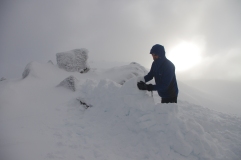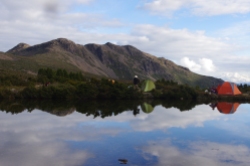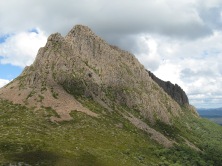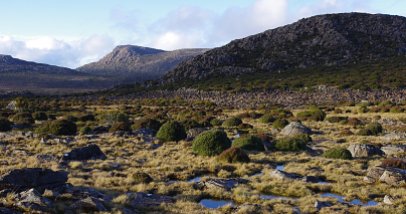
The Ducane Range, in the southern end of the Cradle Mountain Lake St Clair National Park, has some of the most stunning alpine environments in Australia.
Tasmania has notoriously un-predictable winter conditions, but the Ducane can provide spectacular skiing when it’s in condition, on steep slopes and in gullies.
the trip
The ‘traverse’ is generally seen as being the walk/ snowshoe from Ducane Gap, on the Overland Track, over Castle Crag and Mt Massif, into Big Gun Pass, and then exiting onto the Ducane Range proper. From here you head out past the Pool of Memories and down to the head of Pine Valley via the Geryon climbers camp, or through the Labyrinth to the Parthenon track that takes you to Pine Valley hut. From here it is a three hour walk to Narcissus hut on Lake St Clair.
You need to allow a minimum of three days (but up to 5 is good) to do the trip. It is all remote, off track route finding from when you leave the Overland Track at Ducane Gap til you get to the saddle where the Pine Valley trail climbs onto the flanks of the Parthenon (there is a rough track from near the Pool of Memories all the way back to the Parthanon Track which is cairned and easy to follow).
The serious part of the trip is between Castle Crag and the north east corner of the Ducane Range. In summer, an experienced and fit walking party will not have any troubles. In winter it is a more serious proposition, especially if there is heavy snow lower down – this makes the approach from Ducane Gap to the treeline at Castle Crag much tougher, making the climb onto the range exhausting.
There is no escape route from the exposed Castle Crag to Ducane Range section, so don’t launch off onto the traverse unless you know you have at least a day of good weather coming once you leave Ducane Gap. There are some objective dangers, including steep and often wind blasted and icy slopes, cliffs, occasional rock fall, and slow travel across boulder fields. You can do the trip in either direction, although I would recommend starting at Ducane Gap.
some cautions
The two key points to be aware of which may present some objective risks occur as you climb towards Mt Massif from the Castle Crag side. On the final rounded hill before the climb to Massif, most parties veer right (towards Mt Ossa) as they go over the hill top. This has large boulders with some difficult terrain for a few hundred metres. Once you reach the saddle beyond, where a steep ridge leads up directly above you to Massif, I would recommend you turn right (north) and descend off the ridge and walk under the base of the cliffs on the north side of the ridge. After a few hundred metres you will find yourself in a huge open gully. Stick close to the base of the cliffs and climb up on the rough pad to the head of the gully. The ridge which is avoided has considerable exposure and a big fall if you come off.
It is also wise to be aware of the steep pitch of the descent from Mt Massif to Big Gun Pass (BGP). The traditional (summer) approach is to find the high point above the summit bowl on the Ducane Range side of Mt Massif, then follow the ridge line towards Big Gun Pass (there is one exposed section half way along which can be confronting, it is easy going but has a few moves over a very big drop) and then dropping to a long plateau about half way towards BGP. From here it is all boulder hopping almost all the way to the pass. This can be really difficult in icy or wind blown conditions. With the wind chill added to the aspect, be aware that these boulders can ice up quickly in late afternoon. A safer, but still physically tiring, option is to drop down onto the boulderfields out towards Mt Hyperion as you leave the summit bowl. You then work your way around towards BGP, mostly contouring around the mountain to ‘exit’ in the pass itself.

Having said all that, this is some of the most incredible mountain country you will ever find yourself in. Its worth every moment of the long approach, the bush bash to get onto Castle Crag, and the vagaries of the weather once you’re up on top. The following are some images from August 2008.
There are track notes in edition 120 of Wild magazine (November – December 2010), which is available widely in newsagents. There are some notes available on the Wikiski website. You can also find track notes from a range of sources through a simple web search: ‘Ducane traverse, Tasmania’.































































November 8, 2023 at 1:41 pm
iI believe I was probably only the second person to complete the traverse in winter when a group of four of us did it ( including Geryon) inSeptember 1968.